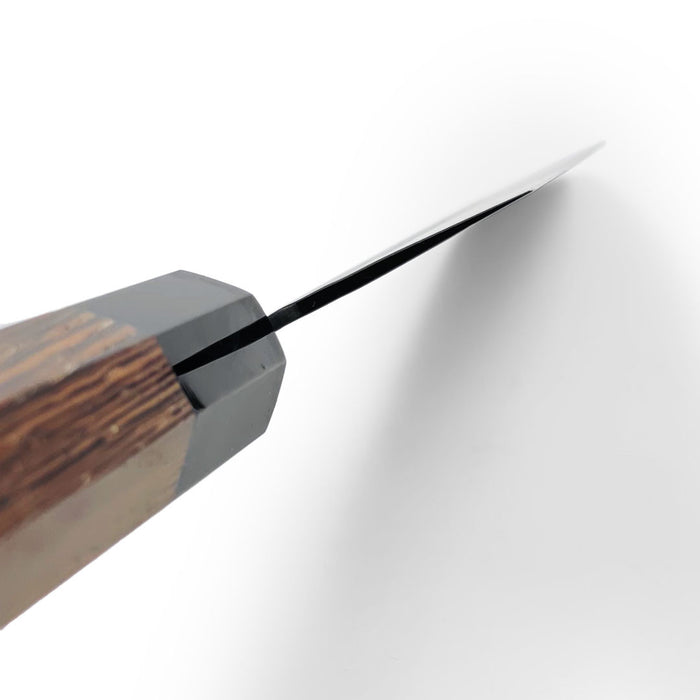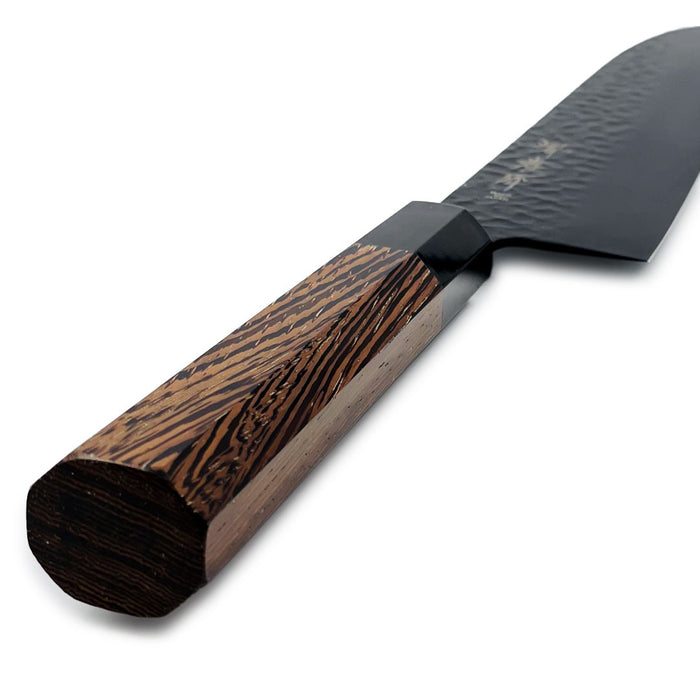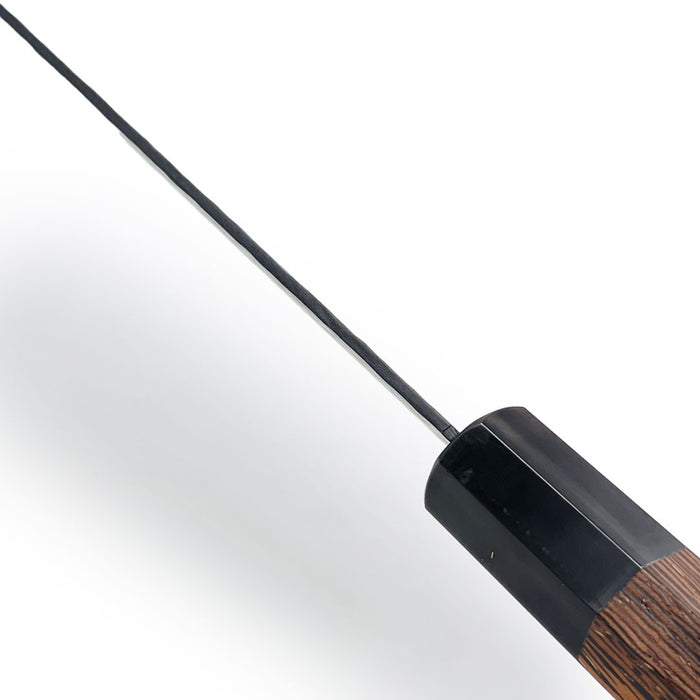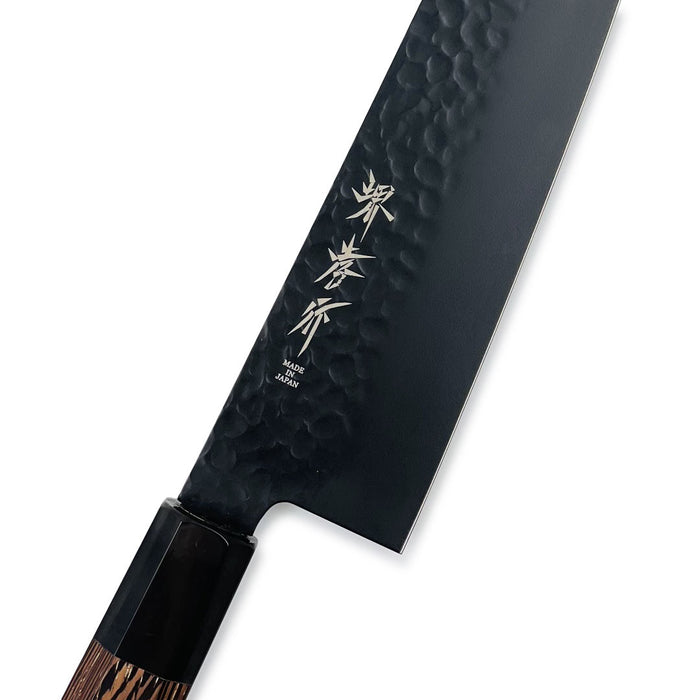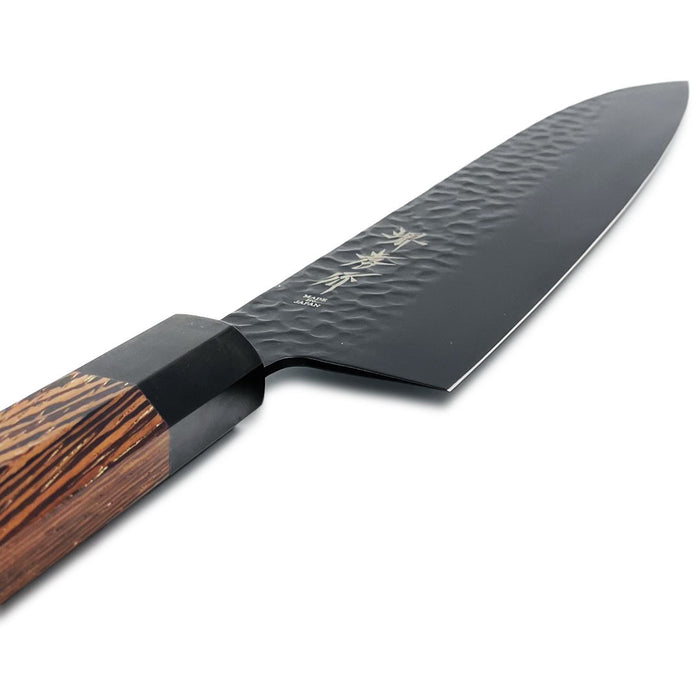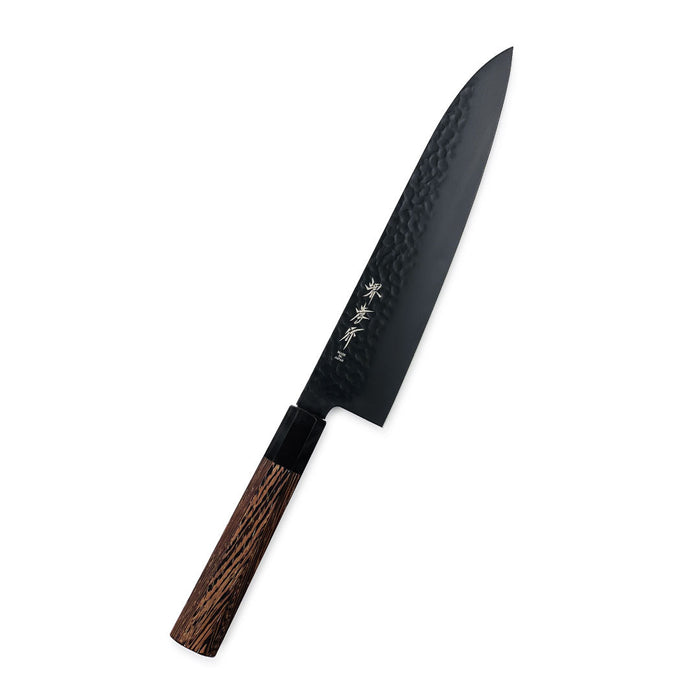
Sakai Takayuki Kurokage Hammered VG-10 Gyuto 240mm (9.4") Non-Stick Coating, Wa-handle
FREE SHIPPING TO THE CONTIGUOUS U.S.
Specifications
- Style : Gyuto
- Length : 240mm (9.4")
- Weight : oz (g)
- Special Feature : Hammered, Fluororesin non-stick coating, 33 layer damascus
- Blade Steel Type : VG 10 Steel
- Handle material : Octagonal Wenge Wood and Buffalo Horn Ferrule
- HRC : 60
- Bevel Angle Ratio : 60/40
- Cover : Not included
Blade & Handle
This line of knives features a beautiful hammered, non-stick-coated blade. The fluororesin coating is made for a hygienic purpose and creates exceptional food release.. The core steel of VG-10 is heat-treated to 60 HRC for excellent edge retention without sacrificing undue ductility and toughness. These knives are thin behind the edge with a 60/40 grind that helps facilitate delicate, precise cuts and minimize wedging in harder foods like daikon and carrots. We recommend these to anyone looking for high-performance geometry in a great-looking knife with better toughness and ease of sharpening compared to harder powdered steels.
Each knife is carefully finished by the craftsmen of Sakai Takayuki so you can rest assured that the knife will perform right out of the box.
Gyuto Chef's Knife
The Gyuto (lit. Cow Sword) is an adaptation of the French chef knife profile for the Japanese market. While the name cow sword would imply that this knife is meant only for meat, its versatility is the same a santoku and can be used as a general-purpose knife for any task. Many would consider a gyuto or chef's knife to be the one essential knife for any kitchen with all other knives being secondary. Compared to a German style chef's knife, a gyuto will have a somewhat flatter profile: this profile lends itself well to push-cutting which is common for Japanese chefs, as opposed to rock-chopping. Gyuto also tend to be thinner at the edge as well as the spine than most European chef's knives and as a result, have the less lateral toughness and care should be taken not to torque the blade while cutting to minimize the risk of chipping.

